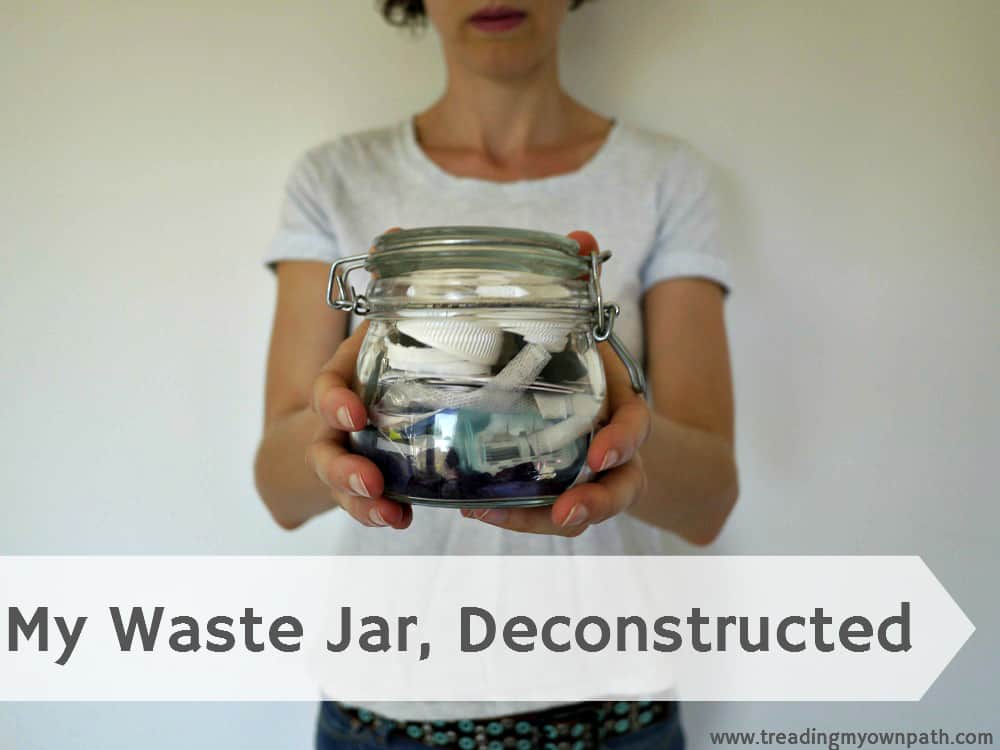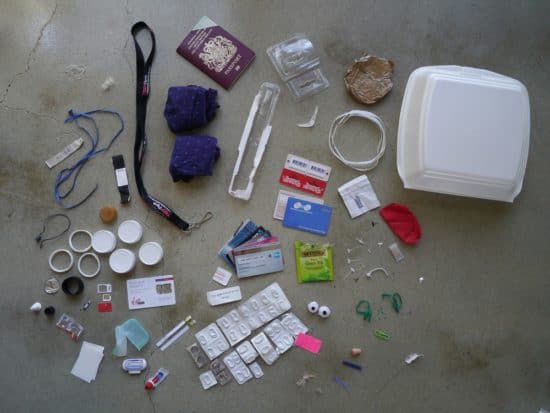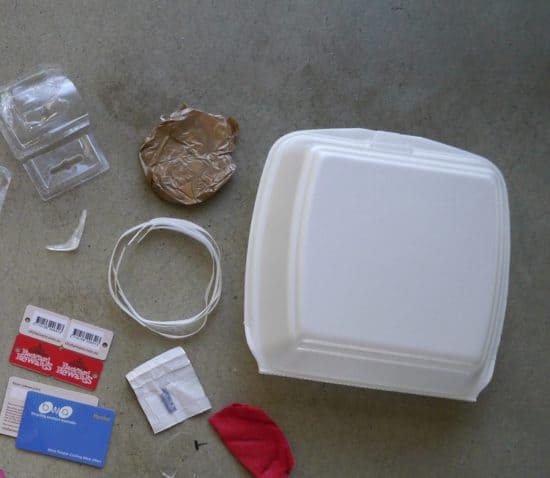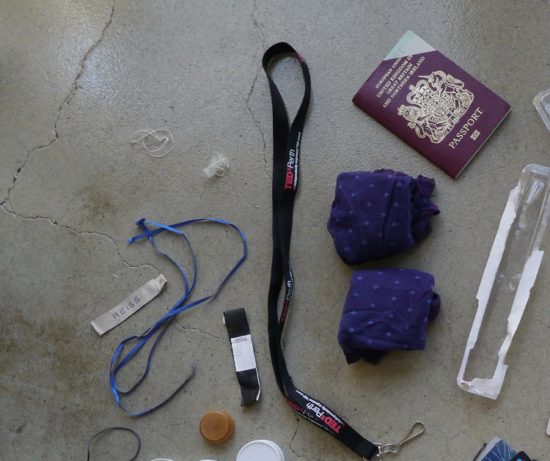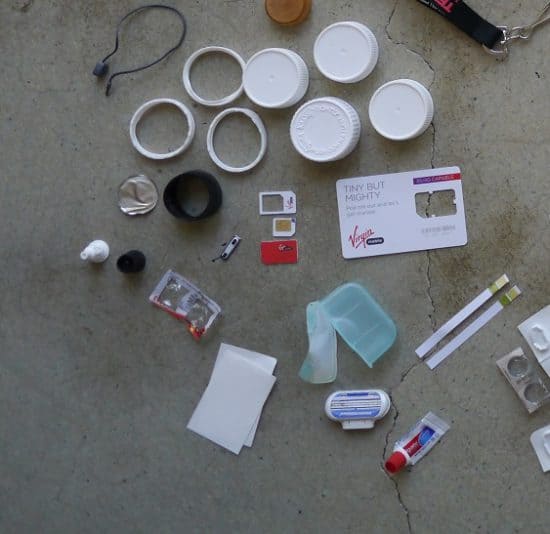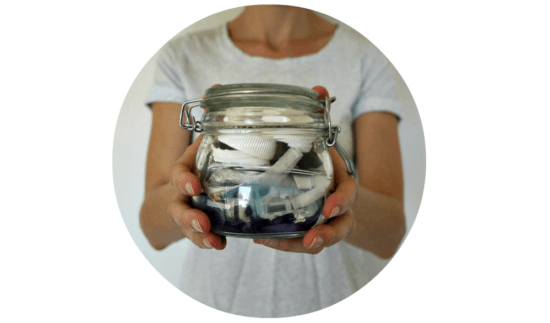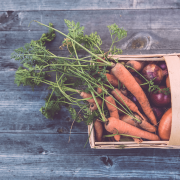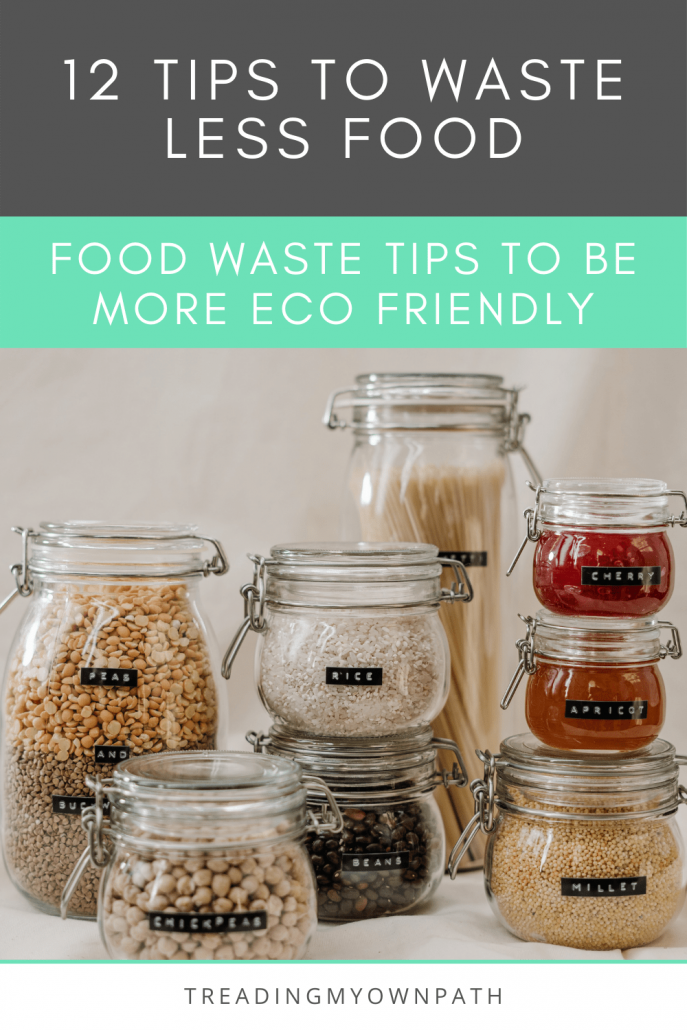Zero Waste Exceptions: Packaging, Plastic + Single-Use Items I Can’t Live Without
In my perfect world, I wouldn’t buy a single thing in plastic, I wouldn’t use a single thing in packaging…oh, and the sun would shine every day :) Even though I’ve lived plastic-free for almost 5 years, and describe myself as “zero waste”, there are still things that I buy in packaging. There are still single-use items I choose not to live without. Oh, and there’s still occasional plastic.
Of course I aspire to do better. But I don’t believe that zero waste is about being perfect. I believe it is about making better choices, trying to improve and doing the best we can.
If it was about being perfect, almost all of us would fall short. Then we’d decide it is all too hard, and give up. What a waste that would be! If we all make a few changes, that adds up to an enormous difference.
Imagine if every single person in the world decided that whilst they couldn’t do everything, they could manage to bring their own bags to the shop or market? Or that they could refuse a disposable coffee cup? Does it really matter that they can’t fit their entire landfill trash for the year in a jam jar?! I don’t think so ;)
Both my husband and I have our zero waste weaknesses. It’s all too easy for me to lump them together – and then blame him for most of them! So I’ve decided to focus on mine only. Just this once!
Packaging, Plastic and Single-Use: My Zero Waste Exceptions
1. Toilet Paper
I know that many people use “cloth” rather than toilet paper. I know that I could get a bidet attachment for my toilet. But the truth is, right now, I use toilet paper. It’s not that I am opposed to either idea, but my husband has assured me he is never giving the loo roll up, and I don’t want to have two systems. I’m happy to stick with his!
That’s not to say I’ll never change, but right now toilet paper is working for me, and it’s staying.
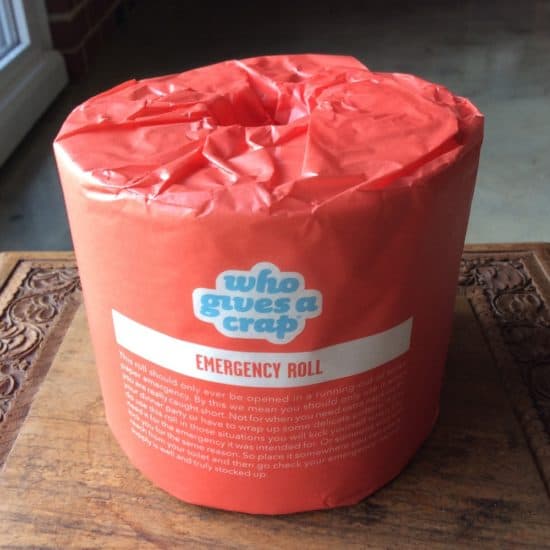
We buy Who Gives a Crap toilet paper. It is 100% recycled, the packaging is plastic-free, and the company donate 50% of profits to water projects overseas. We re-use the paper wrapping, and recycle the big cardboard box it comes in (the are 48 tolls in one box). It is an Australian company, although the rolls are made in China.
Maybe not perfect, but it works for us.
2. Chocolate Bars
Chocolate is my weakness. I’m trying very hard to buy more bulk chocolate and less packaged chocolate, but I have a particular obsession with Green & Blacks 85%. I like to buy organic and fair trade chocolate, and bulk stores have less options.
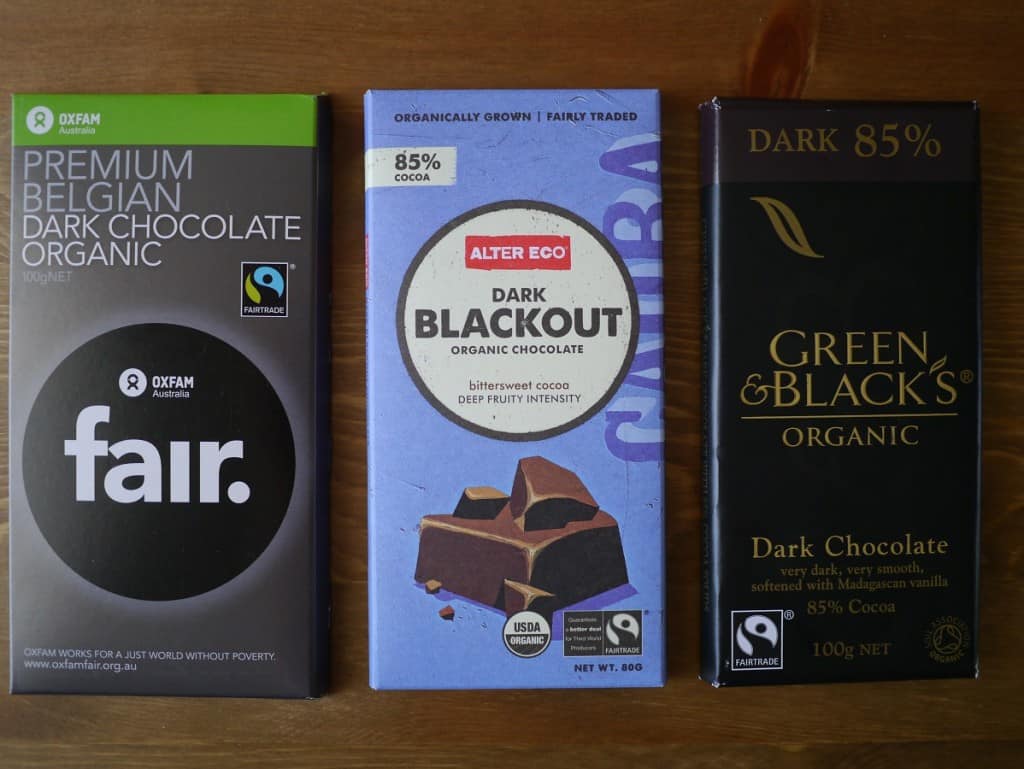
Yes, I know that Green & Blacks was purchased by Cadbury’s, and Cadbury’s was sold to Kraft. Not ideal at all. Truth is, I got addicted before that happened!
I only buy chocolate bars that come with tin foil and paper or card, and I recycle the packaging. I do buy bulk chocolate, too. My local bulk store also sells Loving Earth chocolate in bulk which is organic, Fair Trade and vegan – but it has a lot more sugar than these guys. If I ate a little less, maybe it wouldn’t matter…
3. Baking Paper
I use baking parchment. I use it to bake bread and biscuits (to line my metal baking tray) and to line cake tins or loaf tins. I find it helps stop the edges burning.
Whilst I do have silicone muffin trays of various sizes, and silicone muffin cases, I sometimes need to bake more than I have, and other times I need a bigger size. Sometimes I use paper muffin cases.
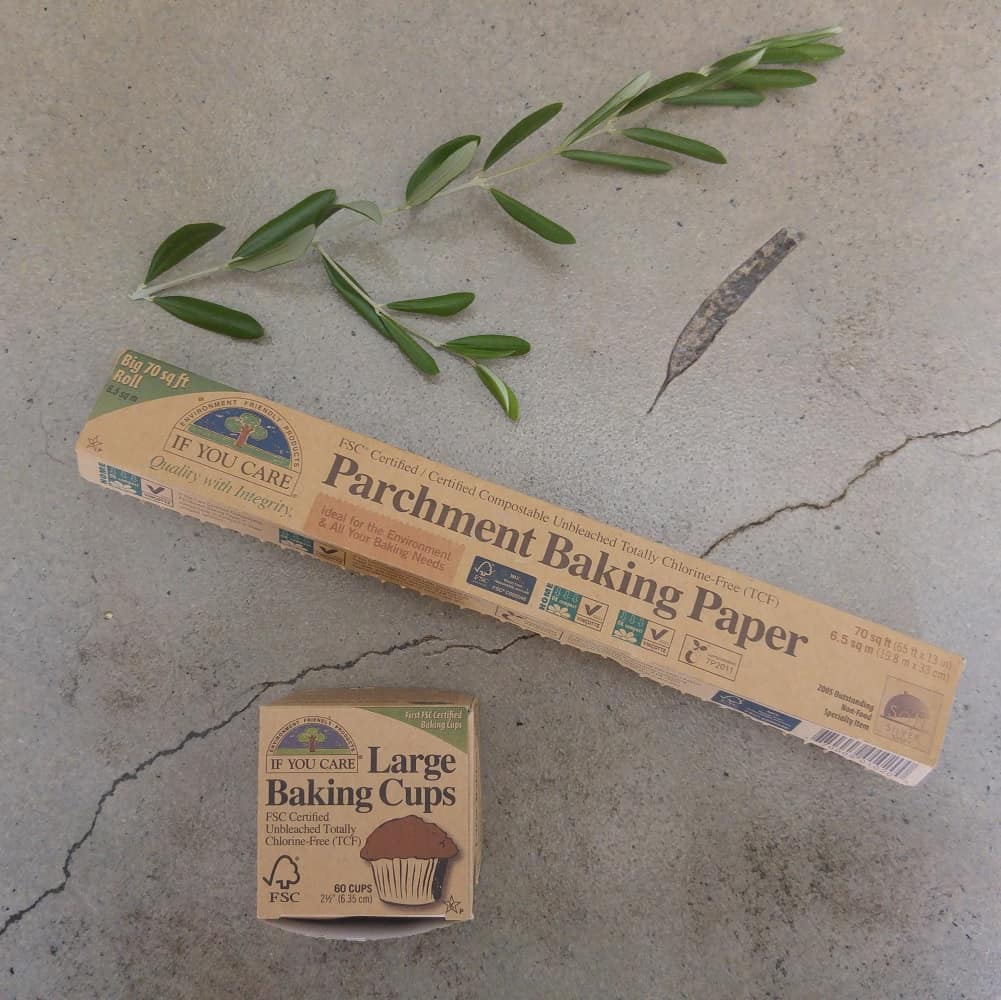
I’ve tried greasing my tins, but I prefer baking paper. Whilst silicone works well, it isn’t recyclable, and heating in the oven does seem to degrade it over time. The muffin cases (baking cups) I use very sparingly, but the paper I use more often.
I will wipe the baking paper clean after use, and will aim to get a few uses out of it before composting.
4. Seedling Punnets
I’ve been buying seedling punnets to establish our garden. After almost all of my summer seeds failed to germinate, I resorted to buying seedling punnets (plastic punnets with seedlings in them ready for transplanting in the garden). It was that or not grow any vegetables all summer, so overall I felt I could justify the waste.
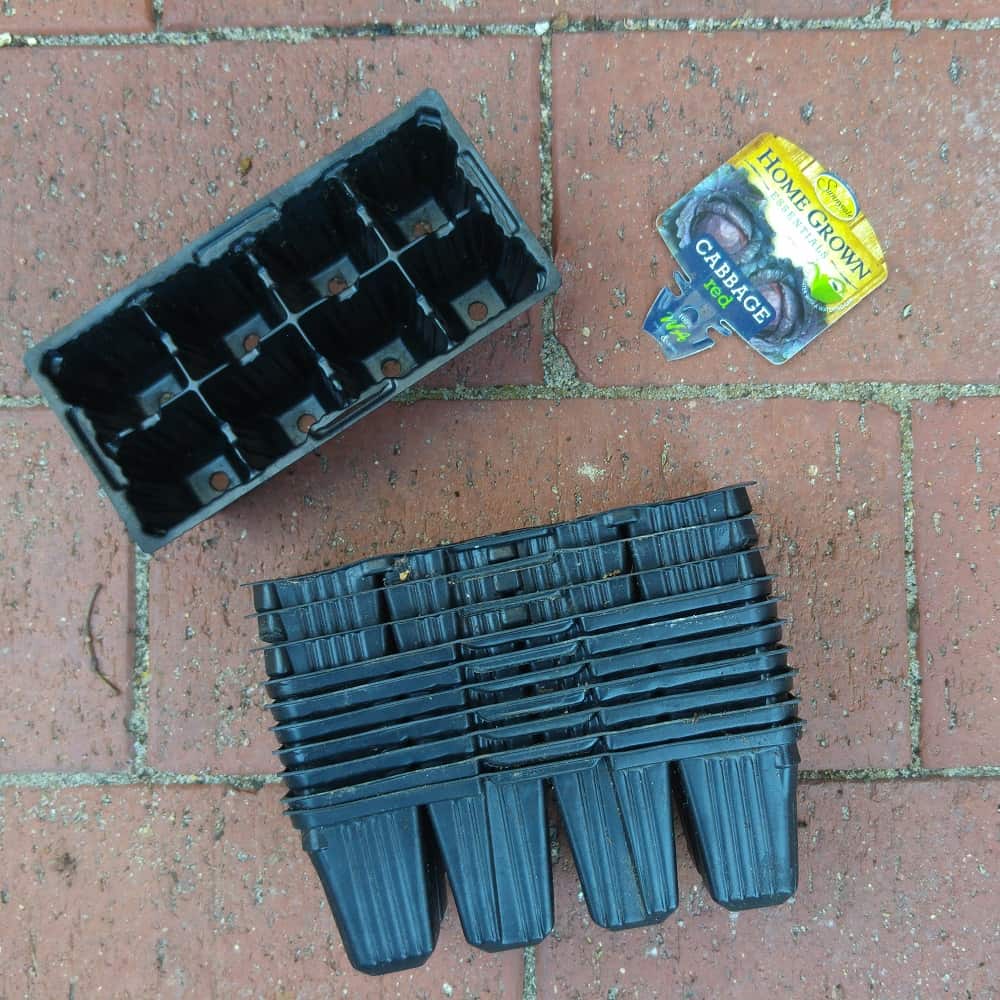
I’ve tried reusing them, but the soil tends to dry out too quickly. I’ve saved them all up in the hope of passing them on to someone who will re-use them.
I use the plastic labels in my garden. Hopefully I will be able to reuse these multiple times, but eventually they will end up as landfill.
5. Seed Packets
As we are establishing our garden, I’ve needed to buy seeds. Some seed packets contain foil/paper envelopes with the sees sealed inside; others have plastic zip-lock bags; and occasionally the seeds are loose.
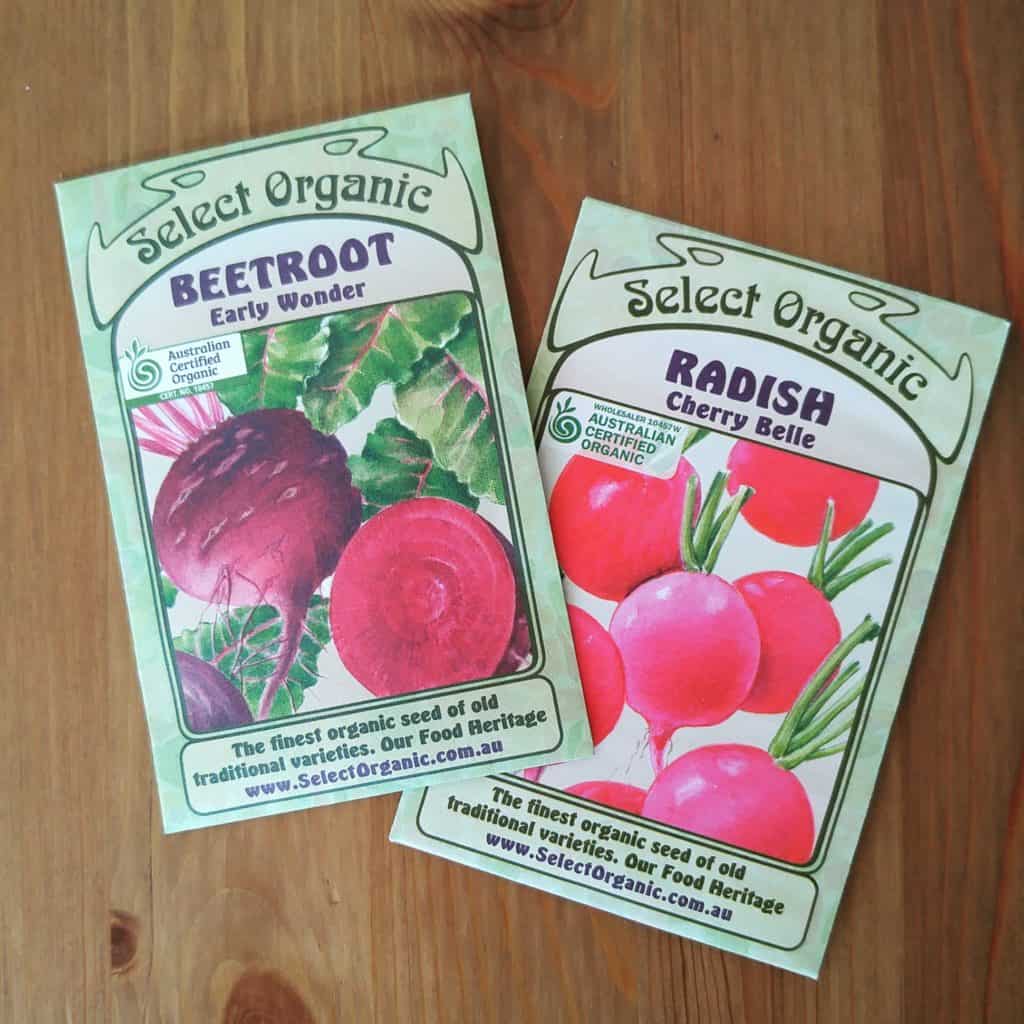
My long-term plan is to save most of my own seeds, participate in seed swaps and grow seedlings from seed. But seed-saving is an art, and it will take some practice. Some things (like tomatoes and capsicums) are easy to save from seed; other things are harder and some require expert knowledge (and more land than I have).
So it’s unlikely I will ever be fully self-sufficient with my seeds.
I will be able to reuse the zip lock bags and the envelopes, but the foil/paper packets aren’t recycable.
6. Dog Food
We buy our dog food in large 14kg plastic sacks. Believe me, I do not like buying packaged industrially-produced dog food. We have tried all sorts of brands, organic and locally produced and Australian-made, but our dog prefers this one.
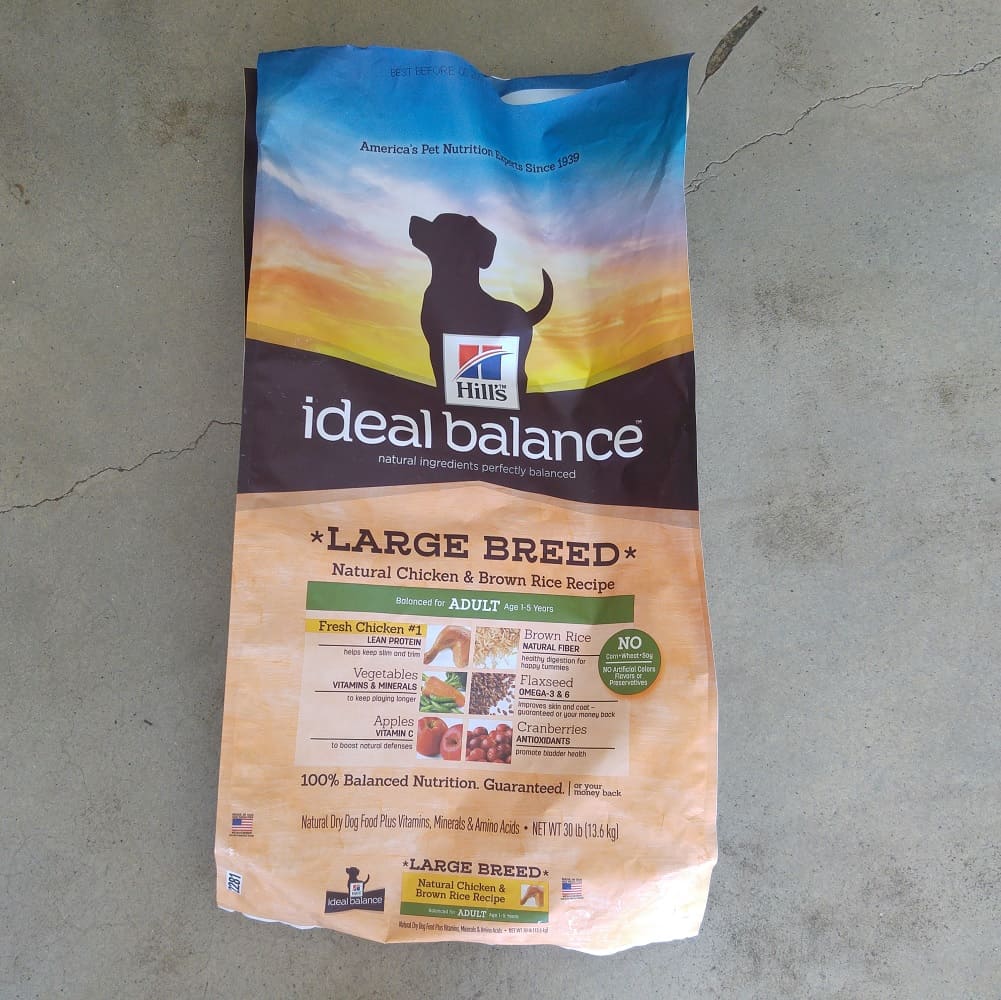
This is the biggest size available in this brand. Some Australian brands are slightly bigger (20kg). There is a bulk store in Perth that sells Australian dog food in bulk, but they buy 20kg bags and use those. As our dog eats through this in a month it doesn’t make sense for us.
I’ve looked into making food myself, but we don’t have space to make it in advance and freeze, and I’m not sure I want to go to the butchers every few days. Maybe in the future it will happen, but for now, we are sticking with this.
The plastic is recyclable at REDcycle.
7. Q Tips/Cotton Buds
I know that Q tips/cotton buds are meant to be bad for our ears, but seriously, I cannot bear to have water in my ears, or blocked ears generally. I use Q tips. They are 100% compostable and they come in 100% compostble packaging, but they are still a single-use item, and one that many zero wasters do without. I, however, have no plans to give them up.
I never ever use the ones with the plastic sticks. I also don’t use them often, maybe once every couple of weeks.
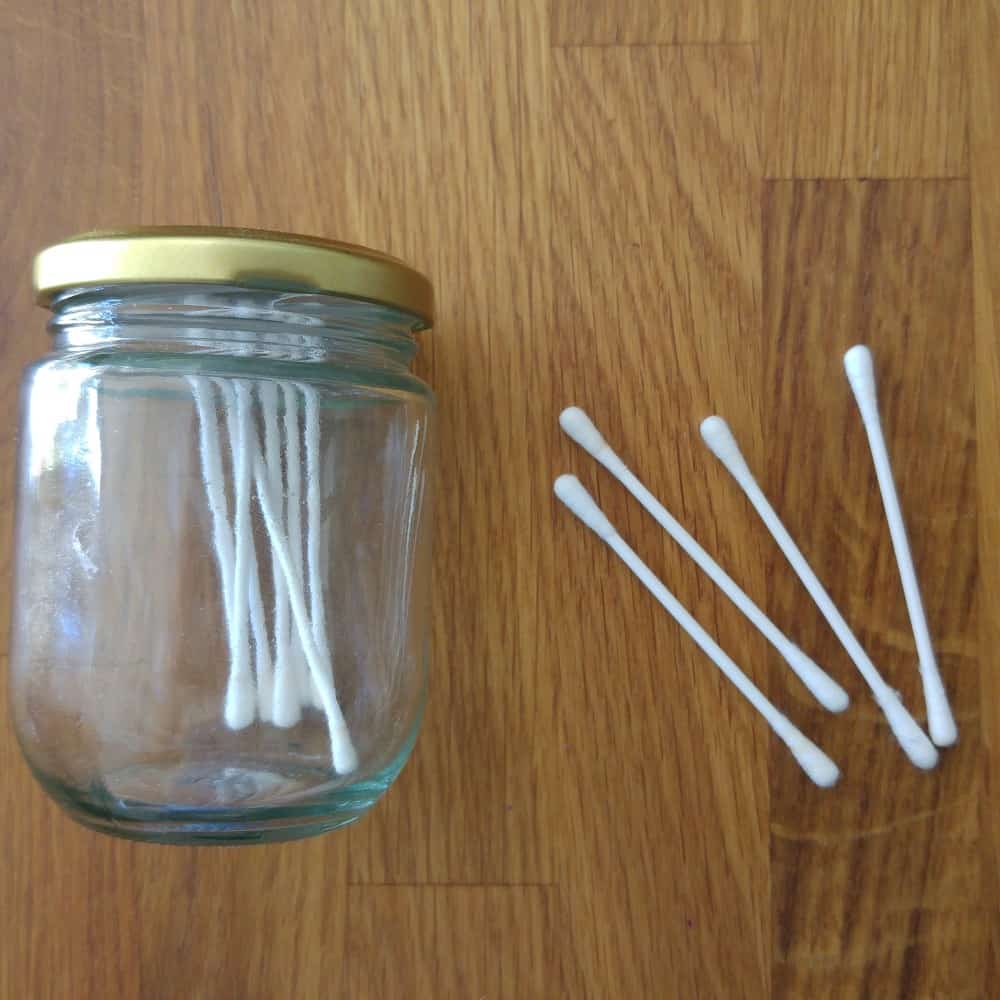
These are made from paper/card and organic cotton, in a cardboard box. I’ve had this box for around 2 years, and I’m due for a new one soon.
8. My Plastic (But Reusable) Toothbrush
When I went plastic-free in 2012, I started using bamboo toothbrushes. The bristles would constantly come out in my mouth and it used to drive me nuts. Not only that, but as I watched the plastic bristles wash down the drain I’d think – isn’t that exactly what I’m trying to prevent?
I saw a plastic toothbrush with a remove-able head in a health food shop in 2014 and made the switch. The heads only need replacing once every 6 months (I was replacing my bamboo toothbrush every two months).
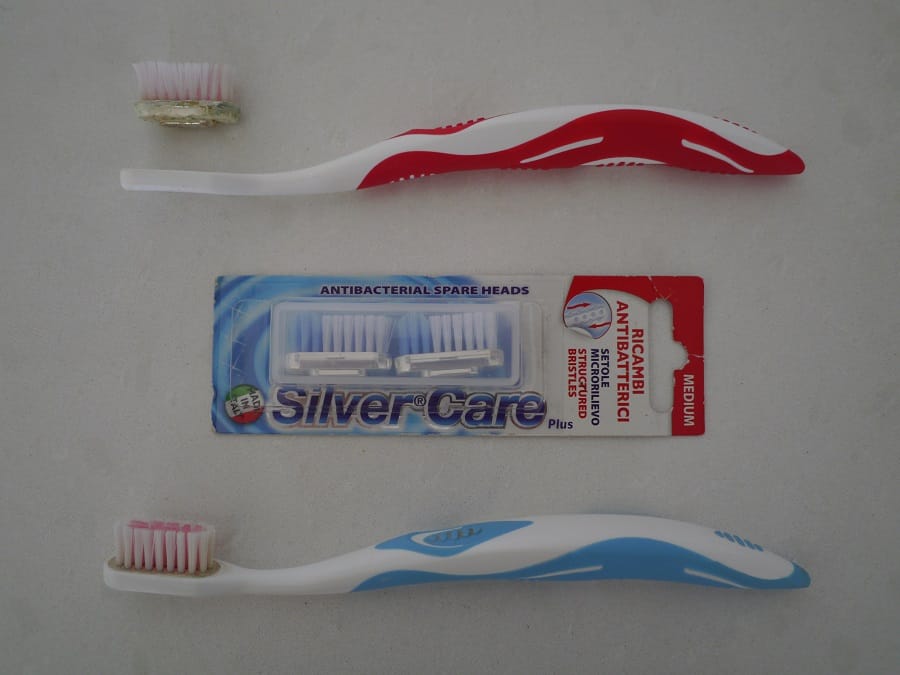
The toothbrush is a brand is called Silver Care. I don’t love the plastic handle, but I think as a toothbrush, it does the job. The packaging and head are recyclable via Terracycle.
I suspect that it was the brand of bamboo toothbrush that was the issue, rather than bamboo toothbrushes as a whole, as many of my readers have told me that they get on well with different brands.
Nevertheless, now I have this one I intend to re-use it. Otherwise it’s a waste.
9. Re-Purposed Plastic
Mostly the zero waste and plastic-free movements align, but sometimes they do not. I’m happy to repurpose plastic if it is suitable for the job intended, will last, reduces landfill, and there isn’t an obvious better solution.
We used repurposed olive export barrels to make garden beds/pots for our veggie garden. These plastic barrels are used to ship olives from Greece to Australia just once, and then they are landfilled. We cut each one in half and turned them into garden beds. Each barrel cost around $30 (and cut in half makes two pots) compared to $150 for a single half wine barrel of the same size. They are food grade, UV stable and a waste product.
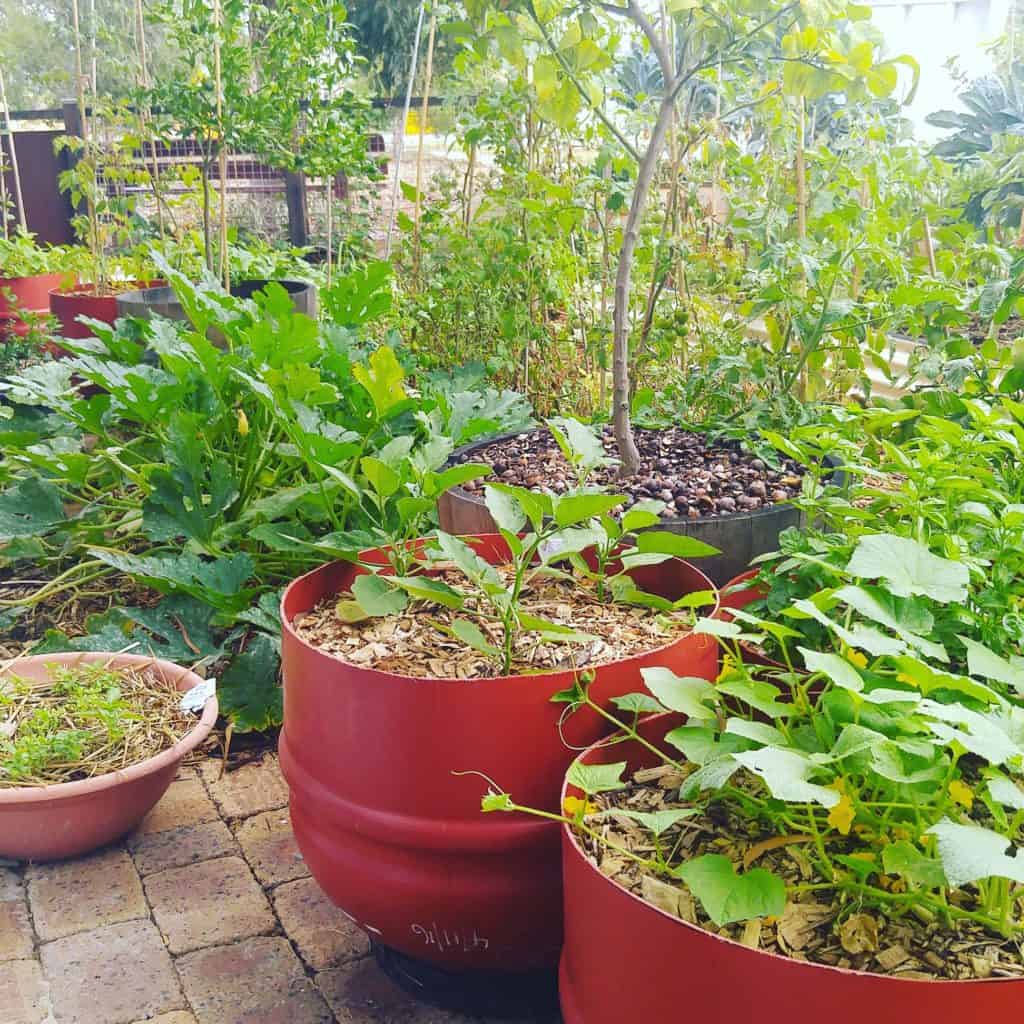
I’d rather olives were shipped in reusable containers, and maybe one day that will happen. Until then, I’m happy using these to grow my own food.
10. Plastic That Other People Give Me
Where I’ve been offered something that I know I can use and that might otherwise end up in the bin, I accept it. Reducing waste in generally is my priority, not keeping my own home pristine. My sister-in-law recently gave me a box of strange-flavoured tea that I knew I would drink and she knew she wouldn’t. It came in a box with a plastic window.
I’ve also been given some DIY skincare ingredients from a member of a community group who would have thrown them out had no-one wanted them.
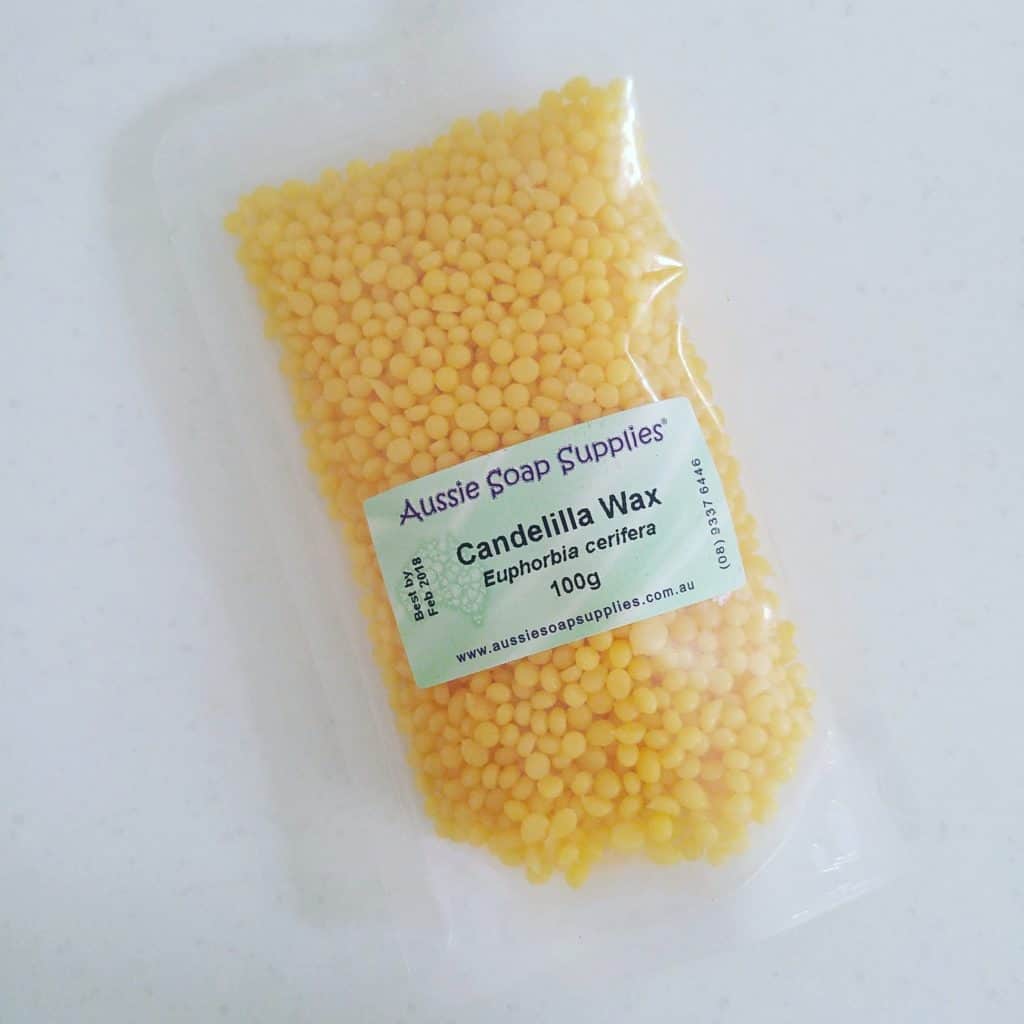
This wax is a plant-based (vegan) alternative to beeswax, and I’m keen to try it out in some recipes. I’ll recycle the packaging when it’s empty.
I’m happy to take packaging from others and accept the waste if it means not wasting the product itself.
Now I’d love to hear from you! What are your zero waste exceptions? Are they things you can’t avoid, or things you choose not to? What is your biggest struggle? Is there anything that you thought would be impossible to give up or avoid, only to find that you were able to much more easily than you thought? Can anyone relate to me me on the chocolate issue?! Please leave your thoughts in the comments below!
[leadpages_leadbox leadbox_id=1429a0746639c5] [/leadpages_leadbox]


